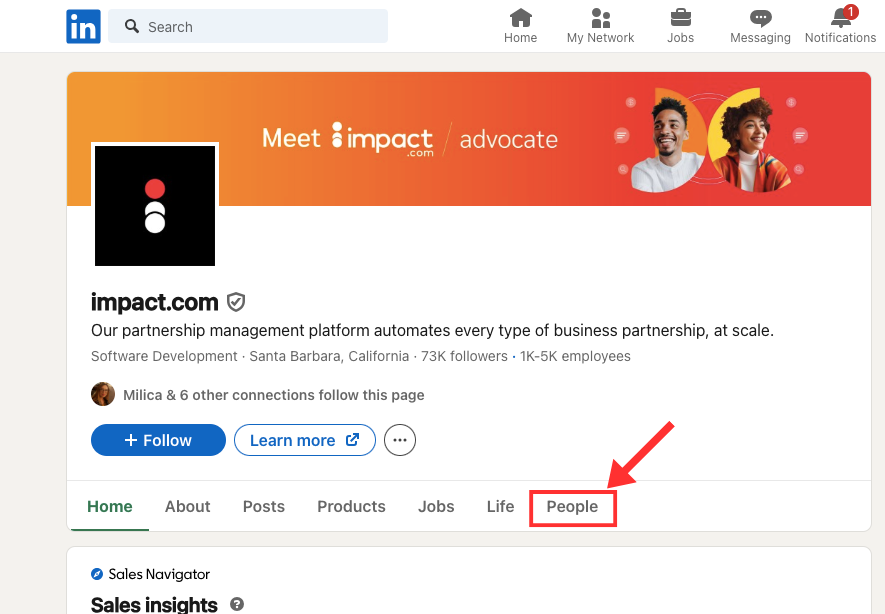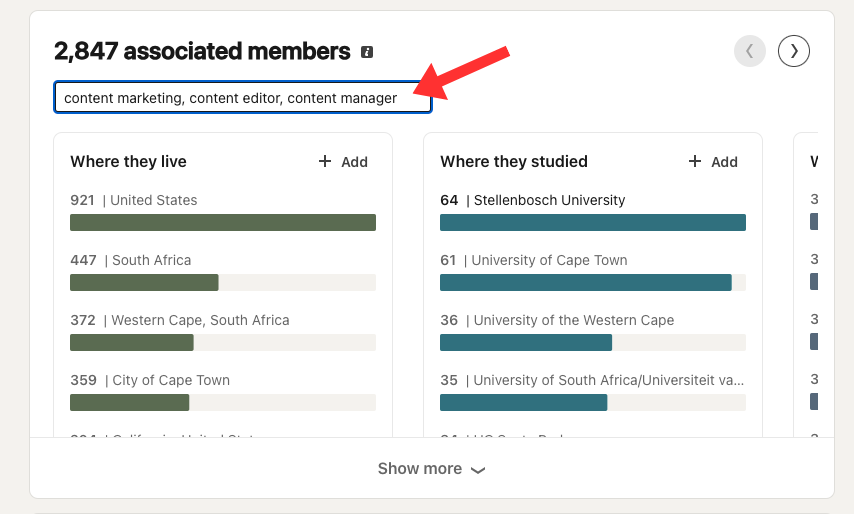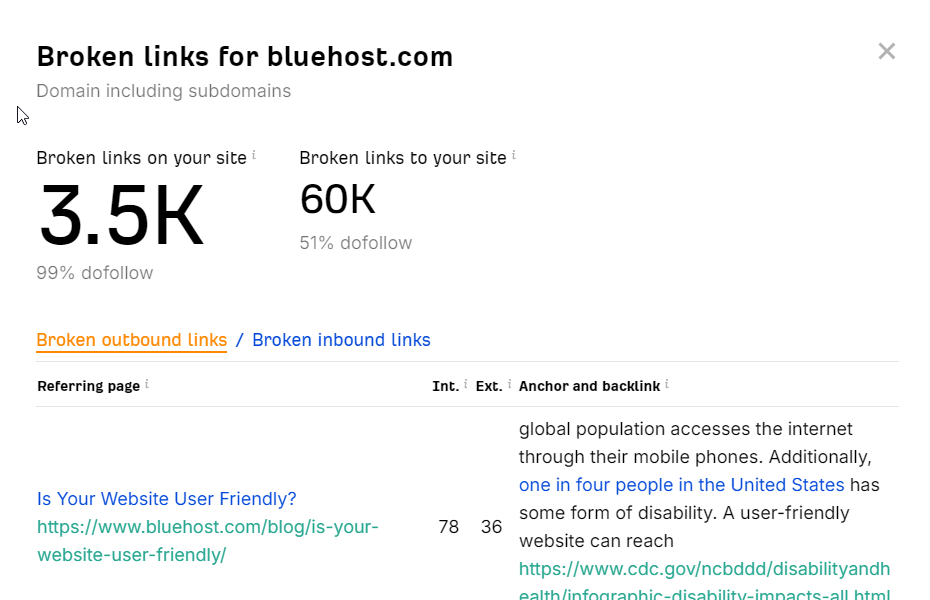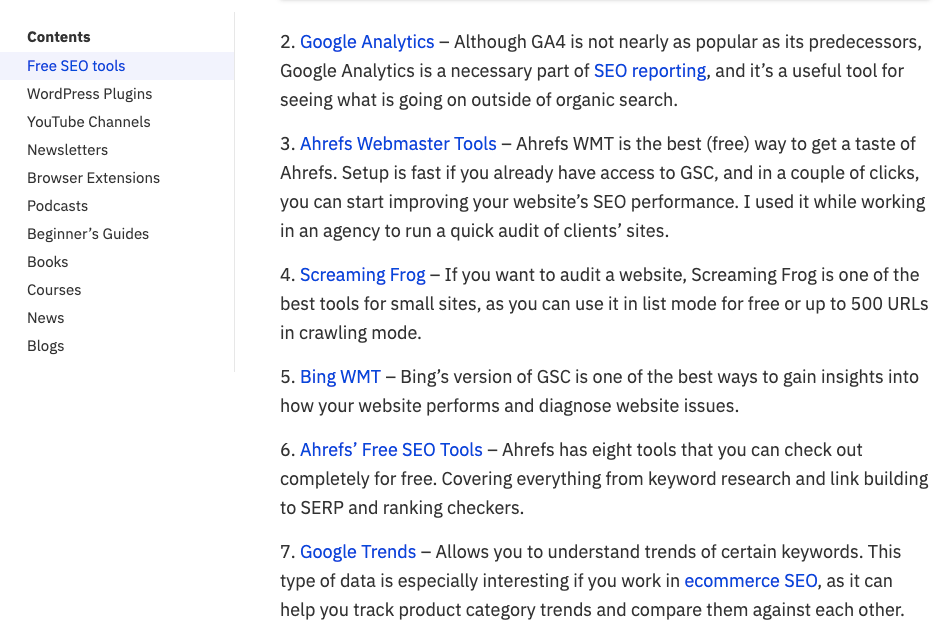If you want to build links that drive long-term success for your SEO and authority for your website, white-hat link building is the only strategy that you need to adhere to for your link building strategy.
White-hat link building helps your site stay ahead of getting a penalty by the search engine algorithm. Not only that, Google loves these links and its algorithms will reward these links, it also helps build trust-worthy in search engines’ eyes to provide your website a higher ranking position on the SERP.
In this article, we’ll dive into the white-hat link building strategies you can use to build a robust backlink profile, increase website authority, boost search ranking position, and drive more organic traffic to your website.
So, are you ready to go? Let’s get started…
What is White-Hat Link Building?
White hat link building refers to acquiring high-quality backlinks in a relevant context through ethical methods approved by search engines. While black hat tactics involve manipulative link schemes, white hat link building relies on valuable content, genuine relationship building, and the earning of links naturally.
Key White Hat Link Building Strategies:
- Guest Blogging – Contribute quality articles to leading websites in your niche.
- HARO (Help a Reporter Out) – Give expert insight to reporters and earn backlinks.
- Broken Link Building – Find broken links on some authoritative sites and recommend your content as the replacement.
- Skyscraper Technique – Build a better version of some popular content and contact all those sites that linked to the original.
- Resource Page Link Building – Get your content included in resource pages or directories of your industry.
- Brand Mentions to Backlinks – Look for brand mentions with no links and ask for a link.
- PR and Digital Outreach – Build relationships with journalists, bloggers, and influencers for earned media coverage.
- Linkable Asset – Create a free tool, infographic, data statistic, successful story or case study that can help you attract more links.
What Make a White-Hat Link Building?
White hat link building follows ethical methods, Google-compliant strategies to earn high-quality backlinks naturally from relevant websites in the same or related industry.
Google advises building links through creating content that “naturally attracts popularity within the online community.” Which can organically attract backlinks when website owners, bloggers, content creators find it useful and add value for their readers.
So, what exactly makes a white hat link? – Most people consider some form of outreach to be the necessary process of gaining links.
We consider a white hat link when it naturally appears in the content through some of the editorials. The link should have a reason to be there, and not influenced by any payment.
Here are some examples of white hat link generating process:
- When a website owner comes across your content and naturally links to it.
- When a website owner receives your outreach email, finds your content valuable for their audience, and decides to link to it.
- When a website owner sees potential value in your guest post pitch and agrees to publish it.
In all these cases, the primary purpose of the link placement is to provide value to the website’s audience.
It makes no difference that, in the last two scenarios, one website owner initiated contact to request a link placement.
White Hat vs Gray Hat Link Building
White hat and gray hat link building are two different approaches to acquiring backlinks, each with its level of risk and reward. Here’s how they compare:
White Hat Link Building
Definition: White hat link building follows search engine guidelines (mainly Google’s) and focuses on earning links naturally through high-quality content and ethical outreach.
Techniques:
- Guest blogging (on reputable sites)
- Broken link building
- HARO (Help a Reporter Out)
- Content marketing & digital PR
- Skyscraper technique
Pros:
- Safe, long-term results
- No risk of penalties
- Builds brand authority
Cons:
- Slow and time-consuming
- Requires high-quality content and effort
Gray Hat Link Building
Definition: Gray hat techniques fall between white hat and black hat. They are not explicitly against Google’s guidelines but still involve some manipulation.
Techniques:
- Buying links from niche sites (without being obvious)
- Excessive guest posting on low-quality sites
- Using private blog networks (PBNs) cautiously
- Link exchanges (reciprocal linking)
Pros:
- Faster results compared to white hat
- Requires less content creation
Cons:
- Risk of penalties if detected
- This may lead to devalued links
Which One Should You Use?
A white hat is the safest approach if you’re building a long-term business or brand (like LinkEmpire.io). Gray hat can work if done carefully, but Google is getting better at detecting manipulative link-building tactics—so the risk is always there.
White Hat Link Building Techniques
We cover nine useful white hat link building techniques in this article that help you acquire high-quality backlinks, build a robust link profile, and get long-term success in the SEO game.
So are you ready to dive in? Let’s get started…
1. Guest Blogging
In 2025, guest posting remains a crucial part of link building to improve website authority, sending referral traffic, building brand awareness, and increasing website visibility on search engines.
One of the main goals of writing a guest post for another website is to acquire high-quality backlinks from relevant sites to build your authority.
Apart from that, guest posting can also help you drive relevant referral traffic from the website you’re writing for.
Which is a mutual benefit for you from your guest blogging article, and the most important thing is that it’s a white-hat link building strategy that will help your website get ahead of a penalty by search engine algorithms.
How to do it?
There are several ways to find guest blogging opportunities to start guest blogging and writing for other websites.
However, success guest blogging requires some techniques and strategies behind the scenes to be done before your content gets published.
Here are the key principles to steps:
- Finding guest blogging opportunities
- Develop guest posting content ideas
- Pitch the blog
- Write your guest post
- Promote your guest post.
One of the little hard to do things in the above mentioned steps is to find the guest blogging opportunities. Therefore, I will make it simple for you by guiding you to the process of finding the right website to do the guest post.
There are several methods to use to find a website that allows guest blogging from other bloggers and content creators, including free and paid ways.
However, in this section I will be walking you through the free method to find the website for guest post.
Finding Guest Blogging Opportunity: Method #1
This free method we’ll use a Google search operator to find the best website in your niche that allows another blogger like you to write for their blog.
To find the websites for guest blogging in your niche on Google, you can use these search operators:
- [Your keyword] intitle: “write for us”
- [Your keyword] intitle: “become an author”
- [Your keyword] intitle: ”contribute”
- [Your keyword] intitle: “guest article”
- [Your keyword] intitle: “submit a post”
- [Your keyword] intitle: “submit an article”
Note:
You have to replace your keyword you want to write for in the [Your keyword] and click on search, if you're not quite sure check the example image of find guest posting opportunities below.

Finding Guest Blogging Opportunities: Method #2
The second method to find the guest post opportunities is to use the LinkedIn business profile to find the people in charge of content marketing by asking whether they’re open to guest posting.
To get started or find opportunities using LinkedIn, first log in to your LinkedIn account and search for a company you want to guest post.
In this example, I will use the Impact.com business profile to guide you on how to get started with LinkedIn for guest blogging opportunities, and find the right people who handle the task.
After you search for a business profile, you’re looking to do a guest, the next step is to search for a person in charge of content marketing to pitch for a guest post by clicking on the “People” as shown in the image below.

Then you’ll have the list of people who are working in the company, but to find the right people who handling the content marketing you need to do a search filter by entering some keyword such as “content” or “content marketing” or “content editor” or “content manager” or you can search them all at one by using comma to separate as shown in the image example below.

2. HARO (Help A Report Out)
Another popular white-hat link-building technique for acquiring high-quality backlinks is HARO, which involves providing expert insights to journalists in exchange for backlinks.
Journalists hunger for a useful piece of data and insight from an industry expert to place on their content to add more value for their writing and readers.
If your pitch meets their needs and it useful, they will feature it in their publication and give a link to your website. The links you earn from this method are powerful, which increases your website authority and creditability.
To get started building links with HARO, you need to create an account with the Connectively (Formerly HARO) platform to find the right report queries to provide your experts.
But the platform announced its closure in early December 2024. So, what can we do? 😢
Fortunately, HARO’s closure doesn’t mean your outreach link building efforts get a hit. Because there are some useful Connectively (HARO) alternatives platform that works similarly to help you connect with journalists and provide your expertise in your niche to the topic they’re working on.
Here are some awesome platform alternatives to HARO:
- Featured (Formerly Terkel)
- Qwoted
- Help a B2B Writer
- Source of Source
How To Do White-Hat Link Building With HARO
You may be wondering why I still say link building with HARO because in the earlier I just mentioned that HARO shut their door.
The reason I and other SEOs still use the word “HARO” because the meaning of HARO are help a reporter out, and even if you used its alternative platform but it mean you’re help a reporter out in exchange to earn links.
So are you ready to dive in with white-hate link building with HARO?
If yes, let’s get started…
Now, in this guide on starting your white-hat link building using HARO. I’ll use one of the mentioned platforms as an example to walk you through the process. In this case I will pick Qwoted.com as an example.
First of all, you need to visit and login or sign up for an account with Qwoted.com if you don’t have an account with it before.

After login or created an account with Qwoted then you have to click on Find Opportunities on the top menu to get started find the opportunities provide your expert pitch to reporters who writing content in your niche.

To find the best fit reporters queries that match your expertise, you can search by entering your niche keyword in the search box.
For example, I am looking to provide a pitch related to marketing. I should enter the keyword “marketing” in the search box and the platform will only show the queries that contain marketing keywords.

The next step is to provide your pitch by finding the best reporter’s queries that fit your expertise and click it to see the query details.

After you have seen the requirement or the details of the question from the reporter, then you have to click on the Start a Pitch button at the bottom to write your answer to the question.
Note:
It doesn't mean all the pitches you provide will land you a link, you must provide the best answer as possible to attract reporter attention to make them want to feature yours in their article.
3. Skyscraper Technique
The Skyscraper technique is the most used in white-hat link building strategies to acquire high-quality backlinks from an authority website in the industry.
Skyscraper technique involves researching the top performance content of your competitors in your niche, and creating something way better than them, to make it stand out.
The next step is to start your link-building outreach campaign by promoting your content to land backlinks from relevant websites in your niche.
There are some important steps you need to keep in mind when it comes to white-hat link building through the skyscraper technique.
Here are the 5 key skyscraper technique processes including:
- Find Link-Worthy Content – Identify high-performing content in your niche with strong backlinks. Use tools like Ahrefs or Semrush.
- Create Something Better – Improve the content by making it more in-depth, updated, visually appealing, or better structured.
- Identify Linkers – Find websites linking to the original content using backlink analysis tools.
- Outreach to Linkers – Contact these websites, pitch your improved content, and suggest linking to it instead.
- Promote Aggressively – Share on social media, email lists, and relevant communities to increase visibility.
You know what? – Only the skyscraper technique alone helps Backlinko increase their organic traffic by 110%, this doesn’t count with other white-hat linkbuilding techniques.
Okay, let’s get back…
When you have created content and made it way better than your competitors, it’s time to start your outreach for link replacement.
First, identifying the websites that have links to your competitors’ content, find the contact information of the person in charge of the content marketing for those websites.
Next, develop your white-hat link building email outreach campaign, and reach out to those people to ask for link replacement.
Provide the key value and the reason why they should link to your content instead of your competitor, what makes your content stand out from others.
By detailing things in your outreach email, it will get more impressions and may land you links when people find yours useful for their readers.
4. Broken Link Building
Broken link building remains one of the most powerful white-hat link building strategies to build a sustainable backlinks profile and long-term SEO game.
Broken link building involves identifying broken links on the webpage that a website links to, which no longer exists on the web, and finding the opportunities to create content to replace the dead link.
There are some steps and processes you need to know to start broken link building, while having the right processes in hand will help you streamline your workflow in building backlinks with a broken strategy.
There are 5 key processes for white-hat link building through broken strategy, including:
- Find Broken Links – Use tools like Ahrefs, Semrush, or Check My Links (Chrome extension) to find dead links on relevant websites.
- Create a Replacement – Develop high-quality content that matches or improves upon the original resource.
- Gather Prospects – Identify websites linking to the broken resource using backlink analysis tools.
- Outreach & Pitch – Contact site owners, inform them about the broken link, and suggest your content as a replacement.
- Follow Up – Send a polite follow-up if no response is received within a few days.

How to Find Broken Link on a Website?
To find a broken link on a website, you need tools like Ahrefs, SEMrush, or Check My Links (Chrome extension) to streamline the process.
If you don’t know how to find broken links of a website for your link building outreach. Don’t worry, In this section I will walk you through all the important steps in the process to help you find the broken link for your broken link building strategy.
So, are you ready to get started? Let’s dive right in…
In this example, I will use Ahrefs Broken Checker tool to help me find the broken links of a website for the broken building. So to get started, you need to visit the Ahrefs Broken Checker tool.

Next step, you need to enter the domain name of the website you’re looking to get a backlink from through your white-hat link building through the broken link strategy.

After you entered the domain name in the text box, and you have to click on the “Check broken links” button, then the tool will fetch the data from the scraped data stored in its database then bring the stored data and provide the list of broken links list as you can see in the image below.

You’ll see the list of broken links, what you have to do is find the best one to start creating content for the replacement.
To help you get a better idea of creating content for the replacement, you can use a tool like the Wayback Machine to check the dead link content, look like by copying the dead link from the list of the Ahrefs Broken Check tool has shown.
Go to the Wayback Machine and enter the copied URLs to check dead content that tool has captured.

The next step you have to do is to click on the date that is indicated with a light-blue color to view the content that was captured by the tool when it was live.

This strategy will help you create replacement content much faster and better for your white-hat link building strategy using the broken link technique to build links.
After you don’t create content, the next step you should do is to develop a personalized email outreach campaign to pitch the website owner for the replacement.
Note:
Keep repeating this process regularly it helps you land more high-quality backlinks from relevant and authority website in your niche, boosting your website authority, increase your search visibility, and drive more organic traffic.
5. Resource Page Link Building
Resource page link building involves acquiring backlinks from relevant websites that list the valuable contents and link resources in the perspective industry. This tactic remains popular among SEOs because it works, scales well, and is relatively easy to do.

To get more in-depth in this link building strategy, you can watch the full video below from the Ahrefs channel by Sam Oh. He have shared everything you need to know to get the work done.
6. Brand Mention to Backlinks
Brand mention link building is a strategy for converting an unlinked brand mention into a clickable hyperlink to your website. It doesn’t just enhance your search visibility but builds a robust online reputation for your brand naturally and ethically.
So why you should focus on backlinks from brand mention? – An unlinked brand mention is when your company’s name, product, or service mentions another website without a hyperlink to your website.
Which have no impact on your website’s SEO, unless they convert into a proper link. Studies have shown that reclaiming unlinked brands is as impactful as other most effective link-building techniques, making it the most powerful strategy if executed well.
So, how to find a website that mentions your company but isn’t linked?
Here are some key steps for unlinked brand mentions link building:
- Finding a website that mentions your brand but doesn’t provide backlinks.
- Finding the right people to contact for link placement.
- Create an email outreach campaign for unlinked brand mention link reclamation.
There are certain ways to get started on finding brand mentions including using tools like Ahrefs, SEMrush, Google Alert, or you can even use Google search operator to find them.
Here is the search operator you can use to find brand mentions in Google search “your-brand” -yourdomain.com. For example: “LinkEmpire” -linkempire.io.
You may be wondering with we use minus our domain name (-LinkEmpire.io), we use it because we want to tell Google to search brand mentions on the web except from my own site.

After you have found a website that mentions your brand but doesn’t provide hyperlinks to your website. It’s time to find the contact information of the people in charge of content for your outreach.
You can use tools like Hunter.io or Snov.io to find their contact email address for your unlinked brand mention link-building outreach to send them cold emails for brand mention link reclamation.
💡 Below is an example email pitch:
Subject: Thank You for Mentioning [Brand Name] in Your Article
Hi [Name],
I came across your article, “[Article Title]”, and wanted to personally thank you for mentioning [Brand Name]. I truly appreciate the recognition!
Would it be possible to turn that mention into a clickable link to our website ([Your URL])? This would make it easier for your readers to explore more about our offerings.
Thanks again for the great mention—I really appreciate your time and consideration!
Best regards,
[Your Name]
[Your Title]
7. Linkable Assets
Creating linkable assets is another powerful white-hat link-building strategy that every website owner must use to acquire high-quality backlinks from top websites in your industry by providing something valuable for others and it’s link-worthy for people to link to.
The term “providing something valuable for others” means to create something that people need and care about such provide free tools, calculators, visuals, case studies, or industry data statistics.
These things are the link-worthy assets you should focus on creating if you seriously want to gain high-quality backlinks organically from websites in your niche.
Note that this strategy is useful and helps most website boost their authority and acquire links naturally in an ethical way. Also, enhances their website search ranking and drives more organic traffic from search engines.
Conclusion
White-hat link building techniques are the key to building business growth in the long run.
If you’re looking to build sustainable growth for your business then white-hat link building plays an important role in your SEO game that drives long-term SEO impact in helping your business succeed.
It is also the strategy that helps you build a robust backlinks profile, which makes you stay ahead of your competitors and drive more customers to your business.
Share via:

